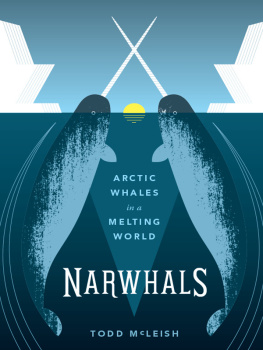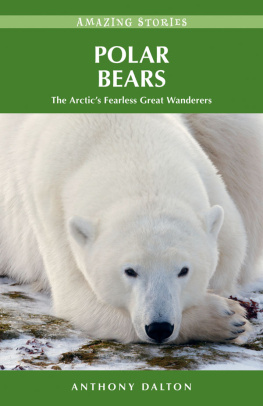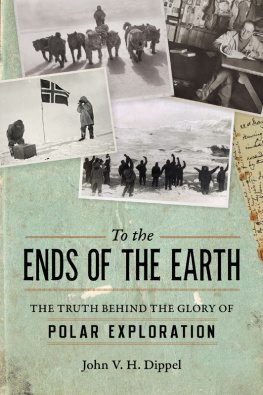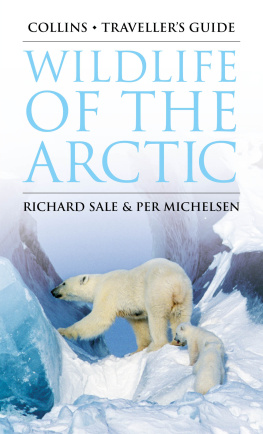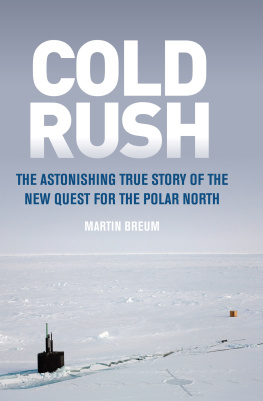A FABULOUS KINGDOM
A FABULOUS KINGDOM
The Exploration of the Arctic
Charles Officer
Jake Page
SECOND EDITION


Oxford University Press, Inc., publishes works that further
Oxford Universitys objective of excellence
in research, scholarship, and education.
Oxford New York
Auckland Cape Town Dar es Salaam Hong Kong Karachi
Kuala Lumpur Madrid Melbourne Mexico City Nairobi
New Delhi Shanghai Taipei Toronto
With offices in
Argentina Austria Brazil Chile Czech Republic France Greece
Guatemala Hungary Italy Japan Poland Portugal Singapore
South Korea Switzerland Thailand Turkey Ukraine Vietnam
Copyright 2012 by Oxford University Press
Published by Oxford University Press, Inc.
198 Madison Avenue, New York, NY 10016
www.oup.com
Oxford is a registered trademark of Oxford University Press.
All rights reserved. No part of this publication may be reproduced,
stored in a retrieval system, or transmitted, in any form or by any means,
electronic, mechanical, photocopying, recording, or otherwise,
without the prior permission of Oxford University Press.
Library of Congress Cataloging-in-Publication Data
Officer, Charles B.
A fabulous kingdom : the exploration of the Arctic / Charles Officer, Jake Page. 2nd ed.
p. cm.
Summary: The second edition of A Fabulous Kingdom will explain the history of the arctic and
describe the current scientific and environmental issues that threaten this fascinating region
Provided by publisher.
ISBN 978-0-19-983780-9 (pbk.)
1. Arctic regionsDiscovery and exploration. I. Page, Jake. II. Title.
G608.O33 2012
910.9113dc23 2011049534
9 8 7 6 5 4 3 2 1
Printed in the United States of America
on acid-free paper
This book is dedicated to the memory of the unsung heroes of Arctic explorationJohn Rea, Matthew Henson, Lincoln Ellsworth, and Hubert Wilkinsand to the Inuit people who taught the explorers how to survive in their land.

On our tenth day at sea we expected to see land. There was a message from the Captain after breakfast to say that we were approaching some large icebergs. I felt very excited. There is something magical about those floating crystal jewels. I rushed on deck. Ahead of us two giant bergs, aquamarine streaked with deep turquoise, rose majestically, like two pillars at the entrance of some fabulous kingdom. Emerald-green waves splashed against their bases, sending up showers of tiny sparkling gems. Irregular in shape, the bergs towered high above us. A curving spine surrounded gaping mouths which seemed to call us to them. There was something sinister about their beauty. As we glided tremulously between them, I held my breath, expecting any moment that they would draw together and crush our tiny ship.
MARIE HERBERT, 1973
CONTENTS
PREFACE TO THE FIRST EDITION
THIS IS A BOOK ABOUT THE BRAVE, sometimes foolhardy, sometimes deluded, and sometimes mendacious individuals who have explored the Arctic on behalf of the nations of Europe and North America. It is a story of heroes and in some cases fools; both sorts of men have perished in their attempts to learn what lay to the North, to find the idyllic land of the Hyperboreans that existed beyond the frigid zone, to learn where Ultima Thule was, to find gold or fame, to navigate an open passage through the sea ice from one continent to another, or to stand on the northernmost point on the planet, the North Pole. For centuries it was widely believed that there existed an open polar sea, an ice-free Arctic Ocean, and men sought this out, often with tragic results. The Arctic has always been layered with myths, and this book is also a look at how such myths arise and how they aresometimesdispelled.
Some of the names of the Arctic explorers are familiar: John Cabot, Henry Hudson, Robert Peary, Admiral Richard Byrd, and a submarine called Nautilus. Other names are more obscure, such as Himlico, a Carthaginian who sailed north in about 500 B.C.; the Zeno brothers, sixteenth-century scam artists of Venice; and Roald Amundsen, perhaps the greatest of all polar explorers.
Besides the quest for straightforward geographical knowledgewhat is the lay of the land?there has been also a quest to understand the nature of this strange place, a quest that in our time we call science. A great deal of science has been done in the Arctic, but perhaps less than in most other places. A great deal more science needs to be done, because the Arctic, for all its ferocious winds, its ice, its cold, and its rawness, is a highly sensitive region. But this is less a book about science than an extended tale of the exploration of the Arctic by Europeans since before the time of Christ. In recent years, numerous books have become available about one or another aspect of Arctic (and Antarctic) exploration. Why, then, another? Without mentioning every expedition, we have sought to put all the major exploratory attempts into a single story, to put them into perspective vis--vis each other and some of the non-Arctic historical eventsand scientific understandingsthat influenced these attempts.
In the long interval during which Europeans have probed the North and speculated about it, there have been three main goals. One, the search for a northeast passage from the North Sea through to the Pacific, was carried out chiefly by the British, the Russians, and the Scandinavians. The second was the search by British and Scandinavians (for the most part) for a northwest passage from the North Atlantic to the waters off Asia. And third was the quest to reach farther and farther north, finally to stand on, fly over, and pass below the ice at the North Pole. This last quest continued up until nearly the end of the twentieth century. Now tourists canand docavort there, on the very top of the Earth. Today, for the most part, we seek instead data about ice packs, frozen seas, melting glaciers, the currents of the oceans, and how the Arctic influences the changing climate of the rest of the world. What we have learned in a half-century are, among other things, the answers to many of the questions explorers have been posing for more than two millennia. And so this book begins with our present knowledge about the nature of the place. We will have the luxury of seeing where miscues were made and understanding how they were made. Also, we will be all the more aware of how stunningly unknown this region was for so long a time, what a cipher it presented to men of temperate climates; and perhaps we will gain an even greater respect for their courage, ingenuity, and sacrifices.
PREFACE TO THE SECOND EDITION
WHEN THIS BOOK FIRST APPEARED (with the title A Fabulous Kingdom), its goal was to put the long history of Arctic exploration into a context that included not just geography but scientific understanding of how this unique region works. Referring chiefly to the nineteenth and twentieth centuries, we wrote in the First Editions Preface that a great deal of science has been done in the Arctic, but perhaps less than in most other places. That is no longer correct.
By the turn of the present century, it was widely understood that a speeded-up version of a constant feature of our worldclimate changewas taking place, and nowhere at a more rapid rate than in the Arctic. A decade later, the Arctic had been subjected to thousands of scientific probesits waters, its ice, its soils, its continental shelves, its atmosphere, its geology, its biota and ecosystemsin essence, a scientific full-court press. By 2010, it was clear that the Arctic was warming up overall twice as fast as the rest of the world, and predictions of concerns such as when the Arctic Ocean would be altogether free of summer ice placed such events increasingly soon.
Next page

